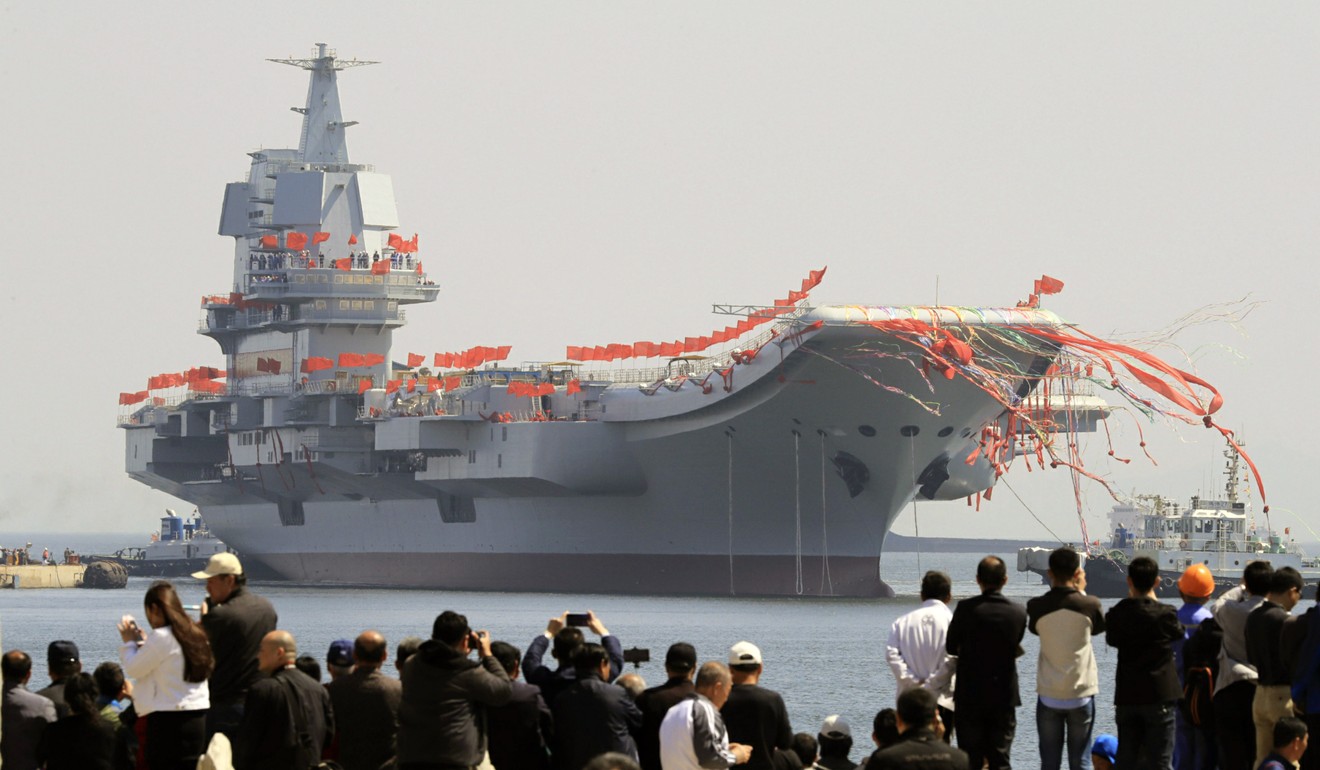
Japan to upgrade new missile to target aircraft carriers, as it steps up East China Sea island defences
- Defence officials are looking at improving the anti-shipping capabilities of the new hyper velocity gliding projectile (HVGP)
- This comes as Chinese ships continue to enter Japanese waters around the disputed islands known as the Diaoyu in China and Senkaku in Japan
Citing sources in the Japanese Ministry of Defence, the Mainichi newspaper said discussions are under way to improve the anti-shipping capabilities of the hyper velocity gliding projectile (HVGP), which is currently being developed and is due to be put into operational service as early as 2026.

The weapon could be used against an island that has been invaded and occupied by an enemy force, the ministry said, although it was careful not to identify any potential hostile force.
The ministry is now planning to fit HVGPs with an alternative payload specifically devised to punch through the deck of an aircraft carrier. The upgraded version would also have a better range and maximum speed, as well as more advanced trajectory capabilities.
China launched the Shandong, its first domestically developed aircraft carrier, last year. Another carrier, the Liaoning, was bought from Russia and became operational in 2012. Beijing reportedly intends to build at least two more aircraft carriers as it looks to further develop its navy’s blue water capabilities.
“It seems very much as if the Japanese are taking a page out of China’s playbook with this missile,” said Stephen Nagy, an associate professor of international relations at Tokyo’s International Christian University.

China-Japan relations show further signs of thaw amid virus support
“The message is that if China wants a better and more stable relationship with Japan, then Beijing needs to decrease its provocative behaviour,” he said.
Japan vows to tackle ‘outstanding issues’ with China before Xi’s trip
“And this information on these new missiles is also part of that message. It shows that Tokyo is not only upping the pressure through words, but also through an enhanced military capability.”
The Japanese government earmarked 18.5 billion yen (US$167.6 million) to the missile project in previous budgets but will add a further 25 billion yen (US$226.6 million) to the development under the 2020 budget.

